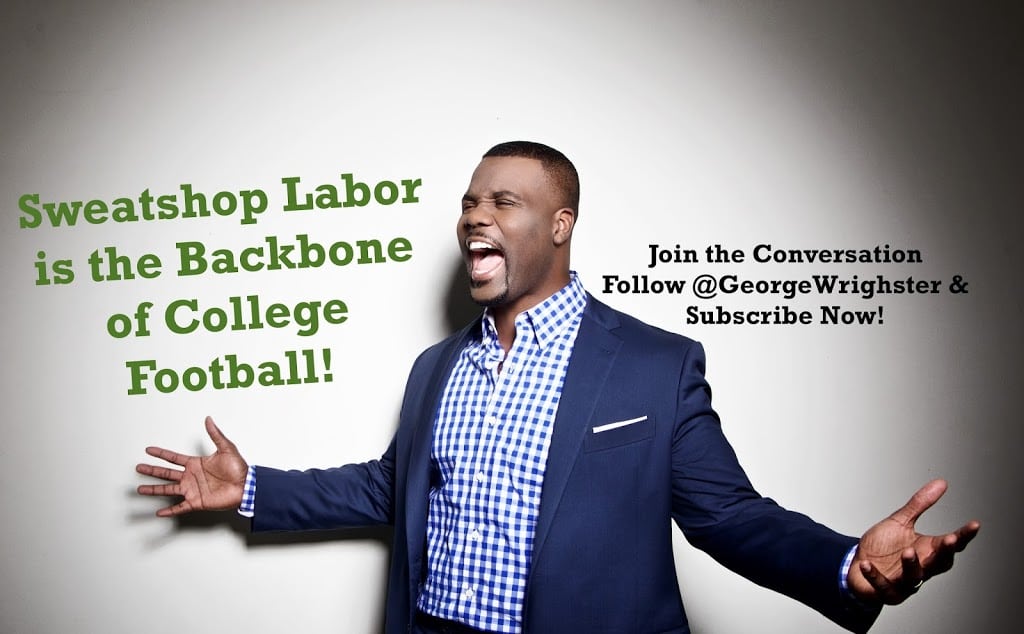How much money do you think true freshman quarterback Tua Tagovailoa made Alabama in merchandising, donations, rising ticket prices, and memorabilia sales for the national championship? Whatever that dollar amount is, it is in the millions, which is a hell of a lot more than what Alabama is paying for his scholarship!
The college football national championship with Alabama vs. Georgia was a success. It was “amateurism” at its finest. Everybody got rich and won, except the players. Fans got to see an entertaining game and see new young stars blossom. It was the second-highest rated championship game in the playoff era. Advertisers and sponsors got their money’s worth. Coaches and administrators get bonuses and raises. The players only leave with a few bowl gifts, memories, and fame they can’t monetize. That is exactly the way the NCAA likes it. They treat everyone like big business, and professionals except the people everyone pays to see, the athletes. That sounds an awful lot like sweatshop labor to me. It also sounds extremely “un-American”.
I know what’s coming next. “These players leave school with a free education. I have student loans up to my eyeballs. I would love to have left school debt free. Plus student-athletes knew what they signed up for, and they can potentially make money in the NFL.”
To that I say, quit crying. Athletes add big numbers to the bottom line. Regular college students add no financial value to the school besides your tuition and fees. There is nothing free about the education athletes get. They worked extremely hard for it in middle/high school, and in college. It required a lot of sacrifices to earn a scholarship. The people who add the most financial value, and add most to the bottom line in life typically get the biggest paychecks. The vast majority of college football players are NOT going to the NFL. There are only about 265 guys drafted each year out of the 10,000+ seniors who play college football each season.
When our life is over, we will all have had peak years of our earning potential. Some people make the “most money they ever made” in their teens, others 20s, 30s, 40s, etc. You never know when that will be for you, so the idea of limiting a person’s earning potential under the veil for “amateurism” seems almost criminal.
Alabama’s $1.2 billion endowment will increase due to additional donations by pride filled alums. Their $103.9 million revenue will surely increase from merchandise sales. Ticket prices to Bryant-Denny stadium will surely increase a few bucks next season. A 30-second ad during the national championship game cost $1.2 million. The average resale ticket price was over $3,000. Nick Saban made over $11 million this season, and he and his assistants will get six-figure bonuses for their achievement.
Tua Tagovailoa became a star and hero by leading Alabama to a huge second-half comeback and the national championship. He is the most popular name in college football. After generating so much money for everyone else, it makes sense that he and the other athletes should receive some additional compensation. He should at least be able to monetize his newfound fame. Imagine how much he could make off signing memorabilia, appearances, podcast or from a YouTube channel? He probably could make a million dollars or more before the start of next football season. Well, that’s not how it works. Let him try to do any one of those things, and he would have played his last college football game.
If not paying the players wasn’t enough, lets not forget that the man that Tagovailoa replaced at quarterback for Alabama is Jalen Hurts. If Hurts wants to transfer Alabama can block it, or restrict which schools he goes to. Coaches regularly leave schools for greener pastures as long as the buyout is satisfied. It does not matter what commitments are made to athletes, administrators, or families. Players, on the other hand, are bound by their commitments.
I love college sports and football in particular, but I have to call a spade a spade. Long gone are the days when the value of a scholarship exceeded or was commensurate with the revenue a college athlete generated. Nowadays, everybody eats except for the players. The big professional business of college football is currently run like a sweatshop.
The NCAA is never going to voluntarily pay the players because it wants to keep up the myth that is “amateurism”. I am not one to present problems without solutions, so naturally, I have a solution. My solutions will pay the athletes, increase graduation rates, and be cheaper than just giving players cash monthly. Some detractors say paying players will ruin amateur athletics. I couldn’t disagree more because it already is run like a professional league.
A revenue sharing model that is paid out in an annuity makes the most sense. The players would participate in a certain percentage of jersey sales, bowl game payouts, video games, and other ancillary income associated with their sport. If conferences pool their money there will be higher yields from interest and investments, which will help fund the pool and cover management fees associated with it. The annuities would be paid out upon graduation. More athletes would graduate knowing there is money waiting there. Instead of handing the kids money, invest in their life after college. Imagine how many businesses would get started, or homes bought. Only good can come from my plan!
Let’s close the NCAA sweatshop, and become partners with the athletes and make more money together!
